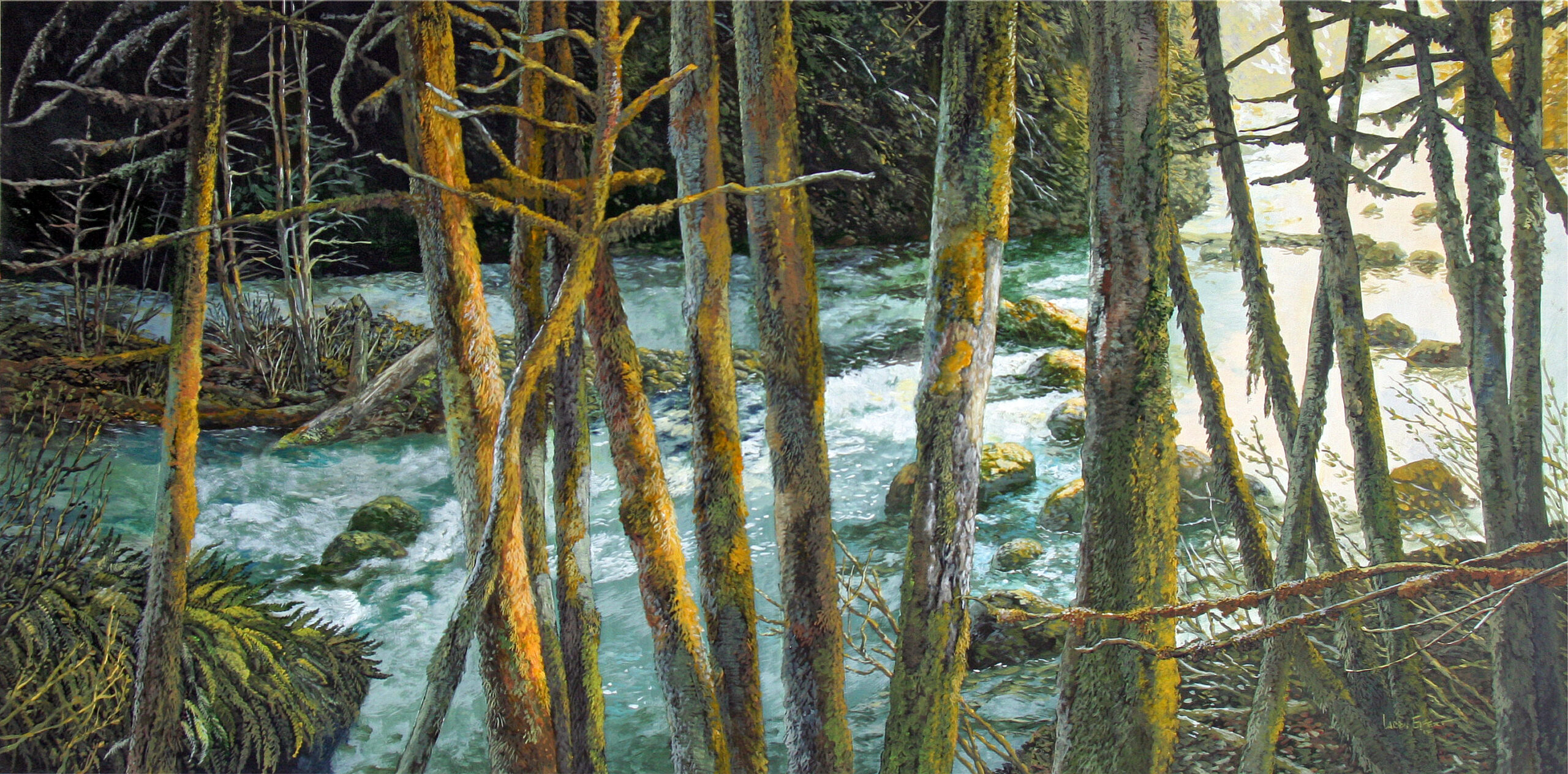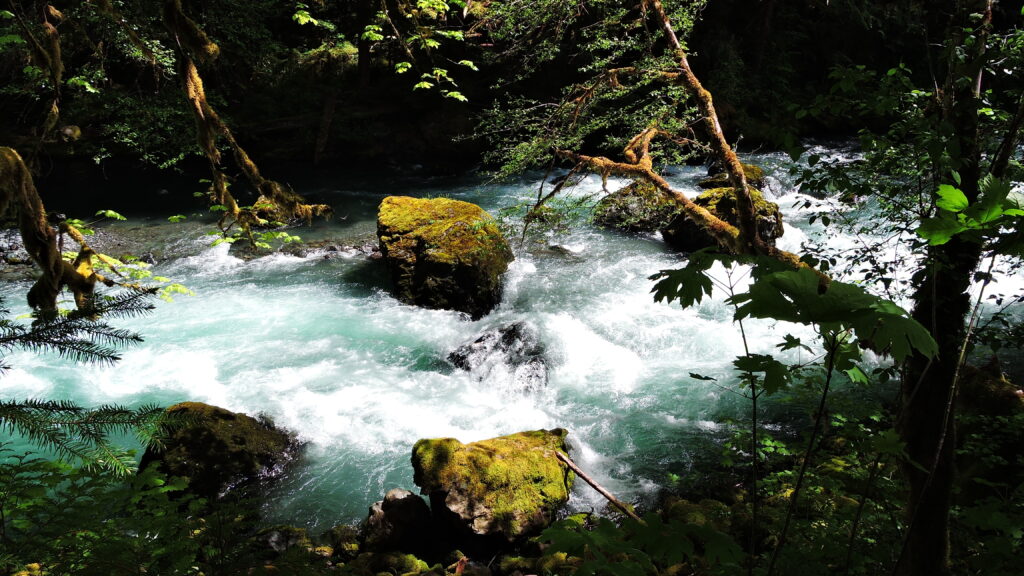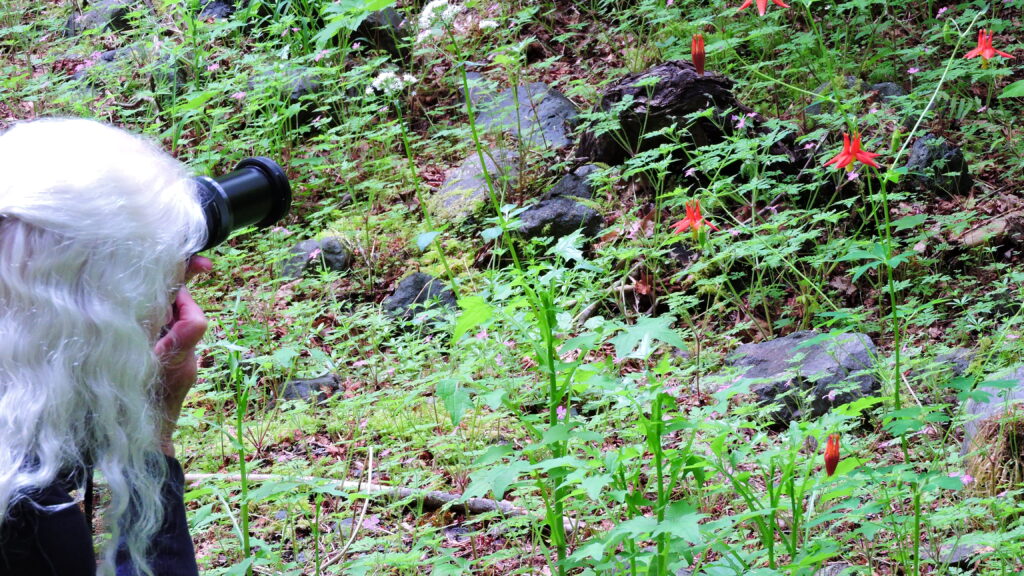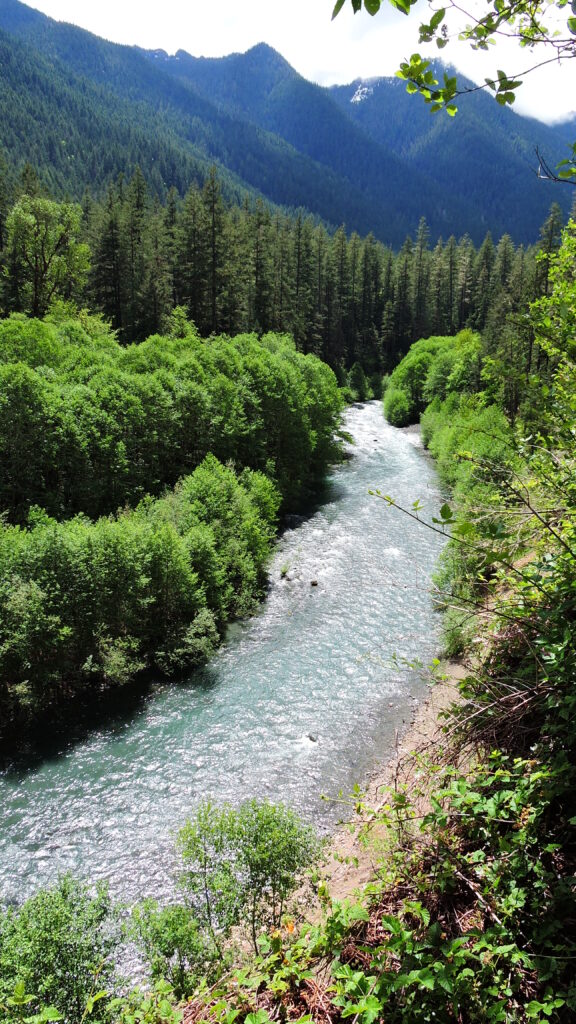
“Getting out there”, the mentally and physically healing immersion into wild nature is nothing new. Okay, I understand what it does for the soul, not to mention an aging body, but it cannot be understated. We’ve gotten to know the some quickie lowland Olympic hikes and this post is about an easy early-summer trail. A couple of years ago I painted this acrylic of the river beside that trail, its namesake. It shows the river crashing along during the early spring snowmelt. The photo below was taken close to the same place, a month and some years later, shot just a two days ago.
Some hikers passed us, going at a jog, all careful of the fact we were socially distancing. Everyone was passing like they should, like they were smart. All had snowshoes, gear for alpine efforts – that told me they were probably returning from Mt Constance a few miles west and vastly up. Decades ago, I, too, would have been running down the trail and aiming for a hamburger. Now? Not so much in a hurry. For our part, it’s not the act of getting there and back, although we did that, but rather appreciating nature on every step. We were already there, after all, every step of the way. Smelling for forest, feeling the rising humidity from the river, closely looking at details, hearing and feeling our surroundings is now what it’s all about.
In my later years, I’ve come to truly worship those details, the way a branch has become intertwined with moss, a columbine flower presenting itself to a pollinator. Taking an extra few minutes for some field sketching makes me intently focus even sharper, to see the mountain rising up ahead, how the glaciers carved this valley and where the trees seem to grow best – or the fire scars on hillsides where ancient burns came down the valley.
On a sunny south-facing slope, I spotted some California hazel, a soft-leaved shrub I remember from my years of trails in the Trinity Alps and High Sierra. Hazel and cascara, another southern shrub were both here, remnants of warmer climates now past. It takes a lifetime of doing this stuff to quickly grasp these details, and it’s what I tend to focus on these days, the details. I’m not a botanist, I didn’t even take biology in school (how’d THAT happen?), but I love these mountains, any mountains, and want to understand how they work, who the characters are, why they’re here.
The physical world is still in charge, no matter what we think! I lost a good friend this past week, Ron Mastrogiuseppe, a former scientist and naturalist for the National Park Service. Ron was the first naturalist for Redwood National Park and over the years he taught me an appreciation for nature you don’t find in books. Sure, books are important to get you the basics, but in field observation you get the actually interaction of an ecosystem, right before your eyes. Ron was considered to be somewhat eccentric, but I’d call it more a heightened level of observation and deep believe in science. He is listed as discoverer of a tree species in the Sierra, along with his wife, Joy. Ron also found proof of the date Mount Mazama erupted, when Crater Lake was formed and reset our known history of that amazing lake. One doesn’t do that just reading books or watching TV, but actually going there in person. Ron founded Crater Lake Institute and commissioned many pieces of art from me. He helped me appreciate the details, and maybe more importantly, how the details really matter.
Science, it drives passion and love for things far beyond just walking past a shrub or two. Once I understood that, I was changed forever.
Thanks for reading this week. You can sign up for emails for these posts on my website at larryeifert.com, down the right side of the home page.
Larry Eifert
Here’s my Facebook fan page. I post lots of other stuff there.
Click here to go to our main website – with jigsaw puzzles, prints, interpretive portfolios and lots of other stuff.
Nancy’s web portfolio of stunning photography and paintings
And here to go to Virginia Eifert’s website.



